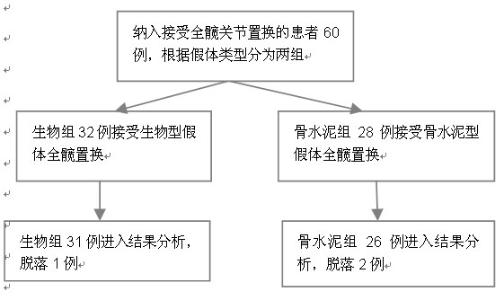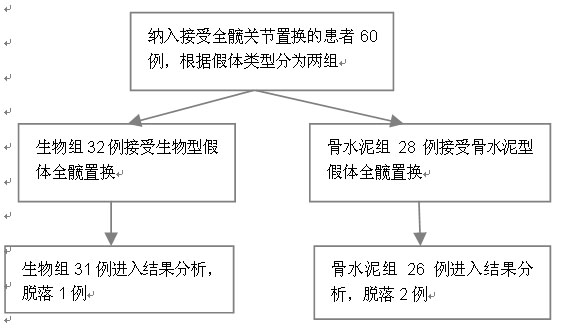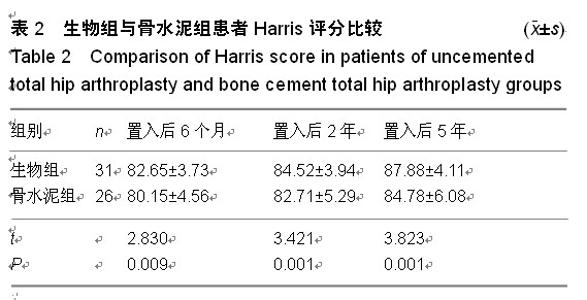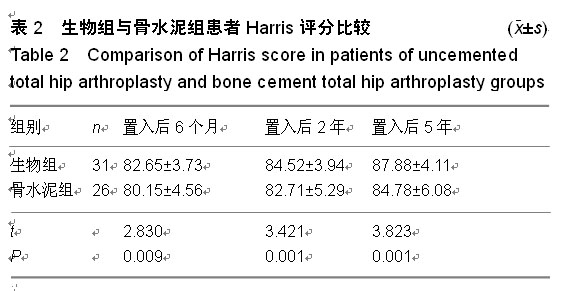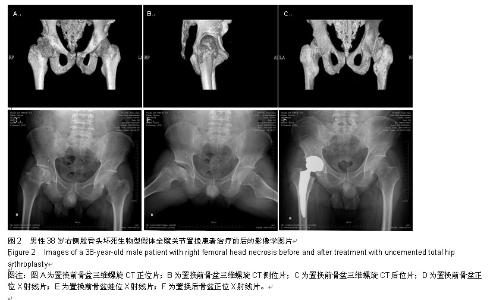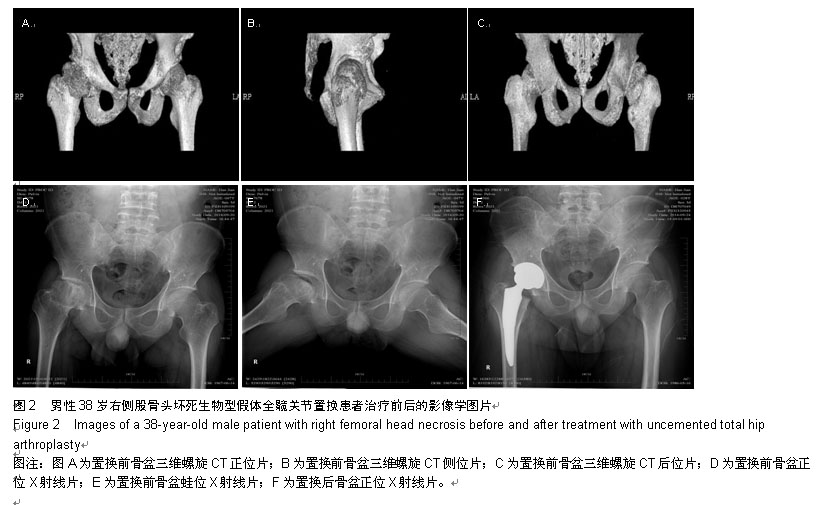| [1] Dulaney-Cripe E,Hadaway S,Bauman R,et al. Acontinuous in fusion fascia iliaca compartment block in hip fracture patients:apilotstudy. J Clin Med Res. 2011;4(1):45-48.
[2] Lederer S,Tauber M,Karpik S,et al.Fractures of femoral head:a multicenter study.Unfallehimrg. 2007;110(6):513-520.
[3] 张向敏,黄卫国,易军飞,等.一期人工全髋关节置换治疗股骨头粉碎性骨折[J].临床骨科杂志,2009,12(5):420-422.
[4] Schliemann B,Seybold D,Gessmann J,et al.Bipolar hemiarthroplasty in femoral neck fractures--impact of duration of Sugery,time of day and the Surgeon experience on the complication rate.Z Orthop Unfall.2009;147(6):689-693.
[5] Aleem IS,Karanicolas PJ,Bhandari M.Arthroplasty versus internal fixation of femoral neck fractures:a clinical decision analysis.Orthop Traumatol Rehabil.2009;11(3):233-241.
[6] 姜宇,杨玉生,朱国兴.中年患者128例生物型全髋置换和骨水泥全髋置换后的随访比较[J].中国组织工程研究,2012,16(17): 3069-3072.
[7] 王坤正.初次全髋关节置换术选择骨水泥或生物型固定方式的比较[J].中华关节外科杂志(电子版),2012,6(4):492-495.
[8] 张涛,李海峰,阮狄克.生物型膝关节表面假体的临床应用进展[J].中国骨与关节杂志,2012,1(5):513-517.
[9] 赵学平,龚平,杨辉, 等.后外侧微创切口全髋置换术与常规全髋置换术比较[J].南方医科大学学报,2009,29(3):576-578.
[10] 唐建国,朋立超,黄鲁铨, 等.全髋置换术扩髓及骨水泥灌注对血液动力学的影响及其机制[J].临床麻醉学杂志,2002,18(10): 520-522.
[11] 刘锋,王青,李民进等.X线、CT诊断全髋置换术后髋臼骨缺损的影像学研究[J].江苏医药,2008,34(3):225-226.
[12] 赖笑雨,高辉.三种人工髋关节置换治疗股骨头坏死67例:2年随访验证[J].中国组织工程研究与临床康复,2010,14(22): 4053-4055.
[13] Johansson T,Jacobsson SA,Ivarsson I,et al. lnternal fixation versus total hip arthroplasty in the treatment of displaced femoral neck fractures:a prospective randomized study of 100 hips.Acta Orthop Scand.2000;71(6):597-602.
[14] 安明勋.人工髋关节假体的设计及界面应力分析[J].中国组织工程研究,2012,16(30):5634-5638.
[15] 张先龙,叶庭均,曾炳芳.髋关节表面置换技术新进展[J].中华外科杂志,2005,43(20):1355-1357.
[16] Verteuil R,Imamura M,Zhu S,et al.A systematic review of the clinicaf eriectiveness and cost.effectiveness and economic modelling of mjnimaI incision total hip replacement approaches in the management of arthritic disease of the hip.Health Technol Assess.2008;12(26):223.
[17] Imamura M,Munro NA,Zhu S,et al.Single mini-incision total hip replace ment for the management of arthritic disease of the hip:a systematic review and meta-analysis of randomized controlled trials.J Bone Joint Surg Am.2012;94(20):1897-1905.
[18] Smith TO,Blake V,Hing CB.Minimally invasive versus conventional exposure for total hip arthroplasty:a systematic review and meta-analysis of clinical and radiological outcomes. Int Orthop.2011;35(2):173-184.
[19] Reininga IH,Zijlstra W,Wagenmakers R,et al.Minimally invasive and computer-navigated total hip arthroplasty:a qualitative and systematic review of the literature.BMC Musculoskelet Disord.2010;11:92.
[20] Kobayashi S.Whether bone quailty matters or not in durability of total hip arthroplasty? Bone quality matters in durability of total hip arthroplasty. Clin Calcium.2011;21(5):746-750.
[21] Li J,Wang Z,Li M,et al.Total hip arthroplasty using a combined anterior and posterior approach via a lateral incision in patients with ankylosed hips.Can J Surg.2013; 56(5):332-340.
[22] Restrepo C,Parvizi J,Pour AE,et al.Prospective randomized study of two surgical approaches for total hip arthroplasty.J Arthroplasty. 2010;25(5):671-679.e1.
[23] 张健,周爱国.经后方及外侧小切口微创全髋关节置换入路的比较研究[J].重庆医科大学学报,2007,32(9):991-993.
[24] Werner BC,Brown TE.Instability after total hip arthroplasty. World J Orthop.2012;3(8):122-130.
[25] 于德水,张元和,曹阳,等.Delta陶瓷人工假体在全髋关节置换术中的应用效果观察[J].山东医药,2012,52(10):36-38.
[26] 冯建民.全髋关节置换假体承重面的选择[J].中华临床医师杂志:电子版,2011,5(21):6204-6207.
[27] 闰飞,陈光兴,杨柳,等.微创人工关节置换治疗髋关节强直[J].第三军医大学学报, 2011,33(14):1518-1521.
[28] 陈界文,翟文亮.全陶瓷关节假体在全髋关节置换术中应用[J].中国中医骨伤科杂志,2011,19(6):67-69.
[29] Renkawitz T,Haimed M,Dohmen L,et al.Development and evaluation of an image-free computer-assisted impingement detection technique for total hip arthroplasty.Proc Inst Mech Eng H. 2012;226(12):911-918.
[30] Leegwater NC,Wiliems JH,Brohet R,et al.Cryocompression therapy after elective arthroplasty of the hip.Hip Int.2012;22(5): 527-533.
[31] Zhou XD,Tao LJ,Li J,et al.Do we really need tranexamic acid in total hip arthroplasty?A meta-analysis of nineteen randomized controlled trials.Arch Orthop Trauma Surg.2013;133(7):1017-1027.
[32] 王红,岳瑞宏,周海字,等.人工髋关节置换前模板测量软件的研发及应用[J].中国组织工程研究,2012,16(48):8938-8942.
[33] 张学军,王宸.数字化模板测量对全髋关节置换后下肢不等长的影响[J].中国组织工程研究,2013,17(9):1527-1534.
[34] 曾晖,刘国平.手术导航系统提高全髋关节置换术中髋臼假体植入精确度的研究[J].中华创伤杂志,2004,20(7):38-40.
[35] 刘登均,李鉴轶,贺小兵,等.基于逆向工程/正向设计的三维重建金属对金属全髋表面置换假体[J].中国组织工程研究与临床康复, 2011,15(43):8055-8059.
[36] 庞智晖,樊粤光,何伟,等.临床研究股骨头坏死人工髋关节置换股骨柄假体的疲劳寿命分析[J].广东医学,2013,34(1):54-57.
[37] Elkins JM.Stroud NJ,Rudert MJ,et al.The capsule~contribution totota/hip construct stability-a finite element analysis.J Orthop Res. 2011;29(11):1642-1648.
[38] 刘登均.虚拟现实技术在全髋表面置换术中的应用[J].广州:南方医科大学,2010.
[39] 胡荣慧,巫北海,张绍祥,等.髋关节CT三维重建与可视化研究[J].第三军医大学学报,2007,29(14):1371-1373. |
